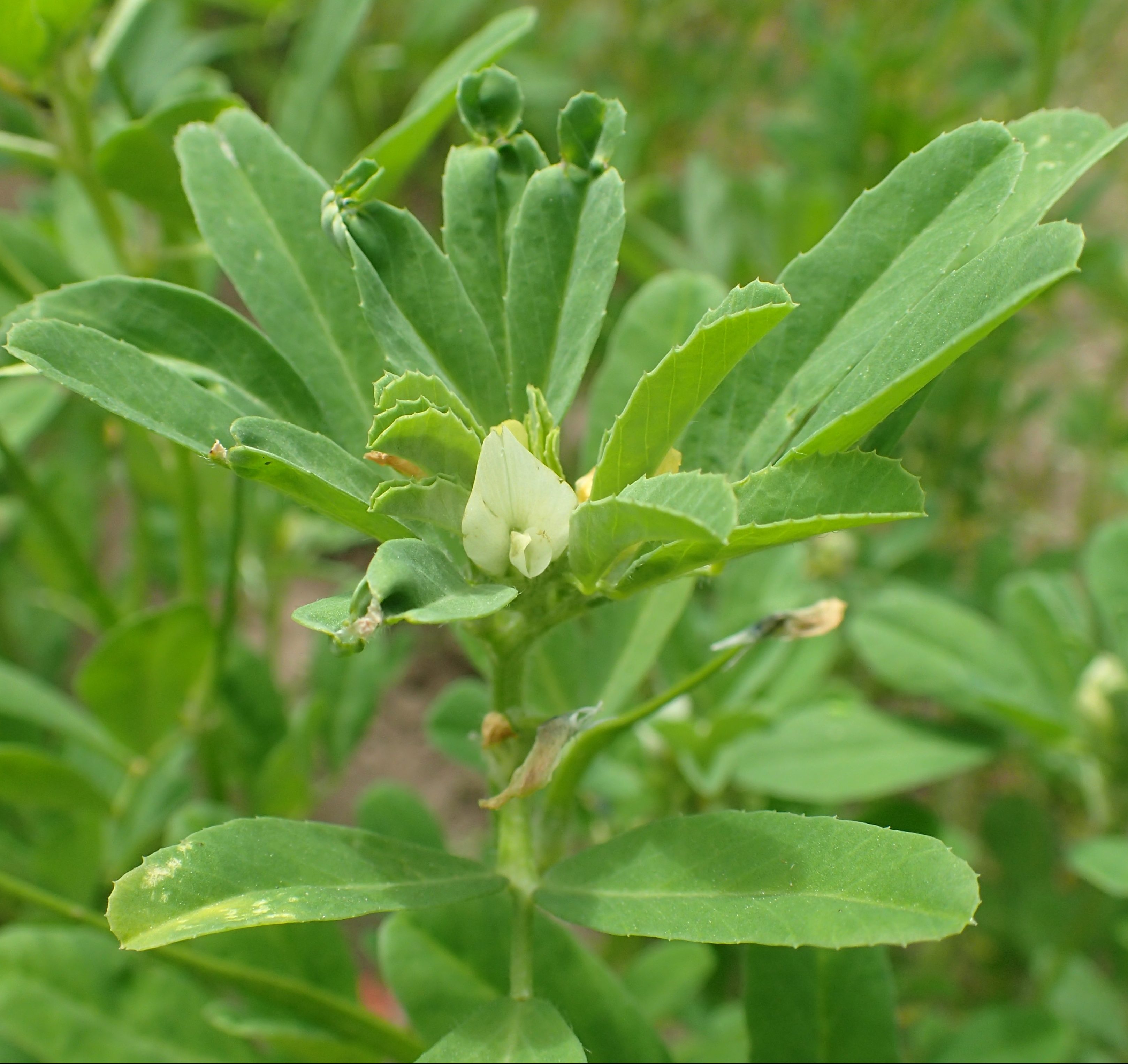 This herbaceous annual was grown from ancient times and is native to the Mediterranean and Middle East, dating back to 4000 BC in Iraq. Also known as Greek hay it has been used as food for both cattle and humans andwas one of the 16 herbs recommended for use in the 9th century plan for the physics garden of the St. Gall Benedictine abbey in Switzerland. It is also one of the many plants recommended for the gardens of Charlemagne but is not in Walahfrid Strabo’s list of herbs for his garden that may have been a physics garden. Fenugreek, however, still is popular as a culinary herb for its celery- maple flavor and is especially valued in Indian and Middle Eastern cuizine. Photo Credit: Wikipedia
This herbaceous annual was grown from ancient times and is native to the Mediterranean and Middle East, dating back to 4000 BC in Iraq. Also known as Greek hay it has been used as food for both cattle and humans andwas one of the 16 herbs recommended for use in the 9th century plan for the physics garden of the St. Gall Benedictine abbey in Switzerland. It is also one of the many plants recommended for the gardens of Charlemagne but is not in Walahfrid Strabo’s list of herbs for his garden that may have been a physics garden. Fenugreek, however, still is popular as a culinary herb for its celery- maple flavor and is especially valued in Indian and Middle Eastern cuizine. Photo Credit: Wikipedia
Although fenugreek has long been grown as a medicinal herb no modern reliable studies exist that support its efficacy. In fact, evidence suggests that some people are allergic to fenugreek and others may have conditions that cause problems when the herb is consummed. In the past the herb has been associated with treatment for respiratory infections, diabetes, anemia, fever, rickets, constipation, stomach ailments, insufficient milk supply in nursing mothers. External uses include the treatmet of boils, wounds, and ulcers.
Plants grow 1-2′ tall and have single or branched stems carrying compound leaves with three oblong leaflets that are up to 2″ long and toothed. In mid summer white, pea-like flowers 1/2″ long and with hairy calyxes, appear singly or in pairs in the leaf axils. The flowers give way to curved seed pods, 2-3″ long containinig 10-20 smooth brown seeds.
Fenugreek likes full sun and fertile medium moist to dry, well-drained soil. It can be propagated by seed but does not like transplanting so whould be sown in it permanent site when soil temperature reaches 55 F. Plants are susceptible to damage by leaf spot, charcoal spot, powdery mildew, and aphids.
The genus name, Trigonella, comes from the Greek tri- meaning three, and gonia, meaning angle, and refers to the triangular appearance of the flowers. The specific epithet, foenum graecum, comes from the Latin words faenum meaning hay and gracum meaning Greek, referring to the supposed use of the plant by ancient Greeks as fodder, and providing the common name, Greek hay.